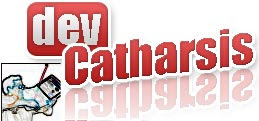I’ve been working on yet another cool RFID project for the last months, and we’ve just concluded the 2nd site survey. Unfortunately I can’t give you much details yet, for now all I can post is generic information.
Here are some generic facts I’ve gathered through this site surveys:
- Laboratorial test can be deceptive. They provided us some important data, but only the final equipment list and topology can only be found on the premises.
- RFID tags are not always hard to detect, on some scenarios the problem is to avoid them. On most cases because of reflection.
- On the other hand reflection can work for us. Whenever we can we should use it to improve coverage.
- Whenever possible setup an environment to potentiate readings. An all around reflection portico can greatly improve readings. Aluminum foil will work just fine for the site survey.
- Whenever possible try to trap signal from interfering with other interrogators - be RFID eco-responsible. The previous reflection portico can be enhanced with external absorbers - for the site survey a wet cloth will do the trick.
- Some environments can be very RFID-hostile. For instance, some metal conveyers will absorb all energy when close to the tags, others will read just fine.
- Choose your antenna’s wisely, from gain to beamwidth. Have a worksheet ready with each of the antennas trigonometric data so you can quickly decide which antenna to try. For these site survey we used 3 types of antennas on a total of 10.
- Make sure you stay on legal limits and that you don’t overrun other readers.
- Don’t use power you don’t need, be RFID eco-responsible :) On most cases you’ll end up getting better readings with less power. And if you really need to use all of the antenna's coverage, remember to set it to half power. Don’t forget to take a spectrum analyzer, it’s a must.
- The perfect match is hard to find. We have to try different interrogators, parameters, antennas, tags, topologies, reflectors and absorbers. All of these against moving tags placed on the worst possible conditions, reading nothing more than RSSI and tag counts.
- Our greater asset: the experience we’ve been collecting from past projects and contact with our partners. Yes, we can now setup a site survey on a couple of hours on that very same scenario that took a month to figure out how to make it work!
All I can show you for now is my company’s (Link Consulting) business link (here’s the Portuguese link). And also a hint of the beautiful Açores Islands:
Santa Maria, Açores
Santa Maria, Açores
Ponta Delgada, S. Miguel, Açores
Igreja Matriz, Ponta Delgada, S. Miguel, Açores
Lagoa do Fogo, S. Miguel, Açores
Thanks to Ismael, Raquel, Renato, Sara, Joaquim, Carla, Tiago and all the people from Açores that received us so well. Thanks to Carlos and good luck for your master’s degree.
<update>
The photos have not been touched other than the stitching. For that I’ve used:
Image Composite Editor - from Microsoft Research. Image Composite Editor is an advanced panoramic image stitcher. While Photo Gallery includes the same stitching "engine", this application provides a lot more fine control. The stitched panorama can be saved in a wide variety of formats, from common formats like JPEG and TIFF to multi-resolution tiled formats like HD View and Silverlight Deep Zoom.
</update>
<update II>
Photo hardware: a manual 16mm fish-eye mounted on my old Canon 10D
</update II>







1 comment:
Mário,
fico extremamente feliz por ver que conseguiste fazer um tratamento "natural" às fotografias aqui de São Miguel e de Santa Maria. Conseguiste preservar e transmitir a beleza das coisas. Foi óptimo ter-vos cá, foi uma semana excelente. Precisamos de mais visitas assim :) Espero que voltem o mais rápido possível, já tenho saudades vossas. Obrigado por tudo.
Raquel Medeiros
Post a Comment